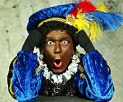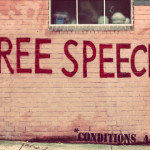Zwarte Piet is an out-dated tradition
Before the end of the 20th century, depictions of golliwogs were commonplace in Britain: appearing on sweet-wrappers, ladies’ jewellery and perfumes, and as toys. Young boys typically received golliwog dolls following World War II as gifts, which would eventually be passed onto their children, and so on.
Yet, as Britain became more diverse, the British public became more aware of the cultural establishment of racial stereotypes in children through these depictions. Regardless of the golliwog’s place in British culture as a once beloved soft toy for children, the popularity and visibility of the golliwog near-evaporated in Britain as political attitudes changed in the late 1960s.
For children
Meanwhile, in the Netherlands—a country so widely, and in many respects rightly, deemed to be one of the most liberal in the world— similar archaic representations of African races not only exist, but are encouraged today through growing movements such as ‘Pietitie’: I am referring to, of course, Zwarte Piet.
‘The children’s ignorance of their own racial stereotyping, would continue’Many of the Netherlanders I encounter argue that Zwarte Piet is for children; that, as children do not understand racial stereotyping or the histories of African subjugation at the hands of White Europeans, Zwarte Piet is, and should be received as, a harmless helper to Sinterklaas. Yet, this fails to comprehend that the children’s ignorance of their own racial stereotyping would continue, and often grow into adulthood, as it has appeared to with those who propose such a contemptible argument.
Furthermore, these assertions that ‘ignorance is a bliss’ violently unwind if one were to listen to the songs the children in blackface sing during this holiday: ‘Even if I am black as coal, I mean well!’
Who ever said you didn’t? What an assumption to make, that I would negatively predetermine your character and sincerity because of the colour of your skin. What do you think I am: racist? Meanwhile, the children without blackface chant: ‘Sinterklaas, enter with your black servant!’
Stigma
This underlines that the children are in fact made aware of the social stratification of race through this tradition: their ability to recognise the stigma of black skin and then associate that with an inferiority to typical Dutch skin tone stresses this.
Other Dutch adults argue that the colour of Black Pete’s makeup has been logically chosen to make the real identity of the disguised ‘actors’ indistinguishable. The reason for this, allegedly, is that fathers, uncles, brothers, and occasionally mothers, will wear blackface in front of their children; as, to the children, Zwarte Piet is real. As real as Sinterklaas. And, unfortunately, as real as the chains that shackled Pete’s forefathers.
‘As far as I am aware, Saints do not have a monopoly on beards’Sinterklaas has a great white beard to mask his facial features, so why not solve this madness by giving Pete a beard? As far as I am aware, Saints do not have a monopoly on beards, divinely warranted or otherwise.
Still, the most damning piece of evidence against advocators of Black Pete’s tradition lies in the fact that Pete is obliged to speak Dutch as badly as I, and with a more ridiculous accent. This, accompanied by a characteristically sophomoric performance, is as ghastly as if I were to march around Groningen speaking in an effeminate Austrian accent while handing out swastikas.
Mischievous
As many immigrants in the Netherlands may actually speak in broken Dutch like Piet, children will grow up associating Piet to immigrants: that they are mischievous at best, and inferior at worst. This is unsurprising considering the numerous television advertisements aired in the Netherlands under Eberhard van de Laan that criticise immigrants who cannot speak fluent Dutch and therefore cannot fully integrate into Dutch society.
Because of this, I see two reasons that contribute to this tradition’s continuation. Firstly, the adults’ refusal to acknowledge, or in some cases even discuss, that what they were taught as children is no longer morally right: the vicious cycle. This is a clear example of a congeniality bias that has managed to infect the minds of rationally thinking people: ‘He came down a chimney!’ some say. ‘So why are his clothes clean?’ I retort.
Secondly, the social strife of the Netherlands, which Zwarte Piet reveals more than the derogatory phrases sometimes heard such as allochtoon and neger, that embody a growing dislike in the Netherlands towards those ‘originating from another country’, captured in the increasingly popular rhetoric of Dutch Parliamentary Leader Geert Wilders.
Race arrogance
Through the indoctrination of children into an enfranchised tradition of institutionalised racism, Black Pete has become an established norm in Dutch society: one that will be difficult to abolish for many. Yet, tradition is a guide, not a governor, and race arrogance, unconscious or not, is an authoritative adhesive for the most abhorrent systems: if endorsed for much longer, perhaps people being arrested for simply wearing ‘Zwarte Piet is Racism’ t-shirts will become common, and the Netherlands will no longer be viewed as the multicultural liberalist society it once was.
Dan O’Neill is an American Studies bachelor student from Tring (England). He’s in Groningen for his second year. He writes the weekly column ‘WTF’ on the Ukrant-website about Dutch habits, that never seize to amaze him.




